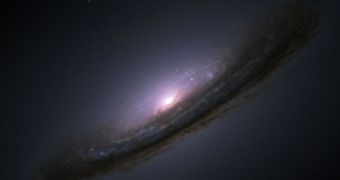While scouting the skies with her amateur telescope, 14-year-old New Yorker Caroline Moore discovered a new, junior-sized supernova, and thus became the youngest person in history ever to do so. The new celestial object, dubbed SN 2008ha, is also very peculiar, and may very well represent a new class of stellar explosions. It's about 1,000 times more powerful than a nova explosion, but about 1,000 times weaker in intensity than a supernova, and astronomers believe that this may be the weakest supernova explosion ever seen.
The celestial formation is located about 70 million light-years away from Earth and experts estimate that, when it exploded, it shone with the intensity of 25 million Suns. However, on account of the large distance between us and it, the glow appeared very dim through telescope lenses.
Following careful investigations, scientists say that the object bridges the gap between novas, which are basically nuclear explosions on the surface of white dwarfs, and supernovas, which are exploded stars, destroyed by a runaway nuclear reaction starting from deep within a white dwarf. It may be, they say, that SN 2008ha was about to go supernova, but that the reaction was, for some reason, halted, leading to the “hybrid.”
“If a normal supernova is a nuclear bomb, then SN 2008ha is a bunker buster. From one perspective, this supernova was an underachiever, however you still wouldn't want [to] be anywhere near the star when it exploded,” Harvard-Smithsonian Center for Astrophysics (CfA) Clay fellow Ryan Foley says. He has been the leader of the team that analyzed the object, and also the first author of a paper detailing the find, accepted for publication in the Astronomical Journal.
“You can imagine many ways for a star to explode that might resemble SN 2008ha. It could have been a massive star suddenly collapsing to form a black hole, with very little energy leaking out. But it looks a lot like its brighter cousins, which we think are nuclear explosion of white dwarfs. Maybe this one was an explosion of that general type, just much, much weaker,” the CfA Clowes Professor of Science Robert Kirshner adds.
“Coincidentally, the youngest person to ever discover a supernova found one of the most peculiar and interesting supernovae ever. This shows that, no matter what your age, anyone can make a significant contribution to our understanding of the Universe,” the leader of the supernova group at the University of California in Berkeley (UCB), Alex Filippenko, concludes. His team uses the robotic telescope at the Lick Observatory, in California, to keep track of thousands of nearby galaxies.

 14 DAY TRIAL //
14 DAY TRIAL //